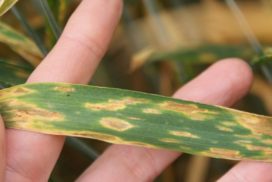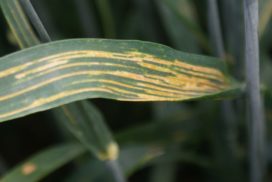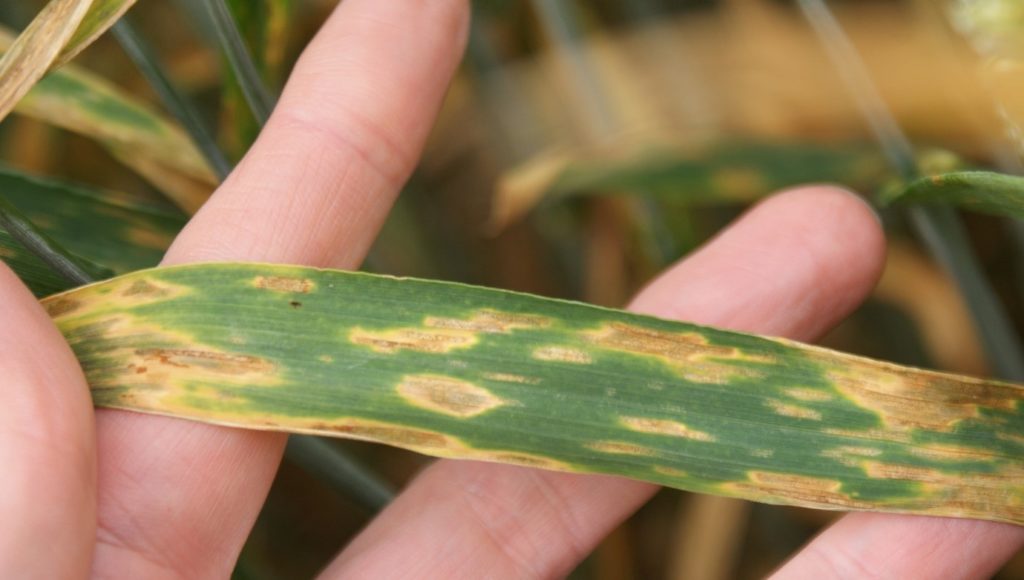Winter Wheat Programmes
1 July 2020Taking the long view of winter wheat fungicide programmes
It is really positive news that a new fungicide has been launched for use this season. Mefentrifluconazole (Rvysol) is a new azole fungicide and will only be available in mix with the SDHI fungicide fluxapyroxad (better known as Xemium). This mixture strategy is an excellent way of slowing any onset of fungicide resistance. Other straight azoles and SDHI products need to be similarly used in responsible and balanced mixtures if we are to preserve them for the longer term. Luckily using them in mixture has short-term wins as well – broadening the range of diseases covered and allowing lower doses of each individual component to be used. Reduced doses are another positive feature that helps to delay fungicide resistance. The more of any fungicide used, whether by number of applications or by dose, adds to the selection pressure and increases the risk of resistance.
One of the key principle of fungicide resistance management is to maximise the use of the lowest risk fungicide and the use of high risk of resistance fungicides is minimised. This means the inclusion of multisites (like chlorothalonil, mancozeb or folpet) which have a low risk of resistance. The last cut off date for use (or storage) of chlorothalonil is 20th May 2020, so many T1 sprays in wheat will still be within scope. At flag leaf and later, other mutisites like folpet or mancozeb will help to take some of the resistance pressure off the higher risk actives like the azoles and SDHIs.
The ‘correct’ dose rate for fungicides is the ultimate decision to be made in the field – based on the varietal rating, the drilling date and the evidence of what is actually in the crop when you are crop walking. Choosing an appropriate dose, offers a win:win as it can reduce the financial cost of spray prorammes and help to steward products for the longer term. There are a few other new fungicides in the production line which is very encouraging but we have driven winter wheat septoria almost to the edge of the cliff in terms of over exposing our current chemistry and the resistance issues are pretty widespread. Preserving remaining efficacy so that we can protect and steward the new chemistry that will be available in 2021 and beyond is crucial so that we don’t repeat the same old resistance problem. Using tailored doses and being smart about tuning to risk might well mean tolerating some low level septoria in a crop and thinking a little more about the margin to be gained over the fungicide cost of high input programmes.
Some diseases are highly visible but not as damaging to yield – mildew being one example. On farms where it is a common and significant problem it will need management but in others it can often be left as a few pustules as the base of the crop will probably not merit control. On the other hand a disease like yellow rust can be very hard to control if allowed to become established and if crop walking shows it has infected it is best to manage early.
Winter wheat will usually merit three sprays in Scotland, and occasionally an early T0 spray will be justified where yellow rust threatens early. This year, with more late drilled crops, there are fewer reports of rust about. But if eyespot and septoria are the only concerns these can really wait until T1 and the emergence of final leaf three. The flag leaf is the important one to protect and will be where the most effective chemistry is justified – so this will usually be SDHI and azole based.
Fiona Burnett, SRUC
Article first published in the Scottish Farmer
Sign up to the FAS newsletter
Receive updates on news, events and publications from Scotland’s Farm Advisory Service



